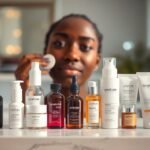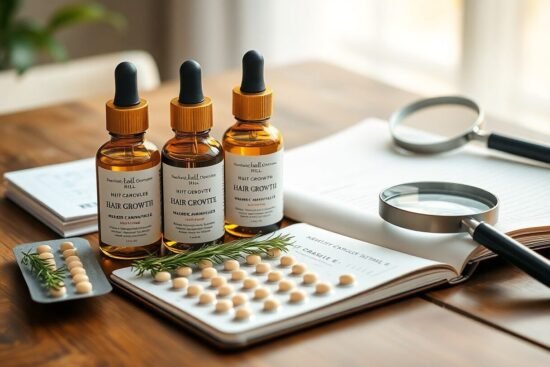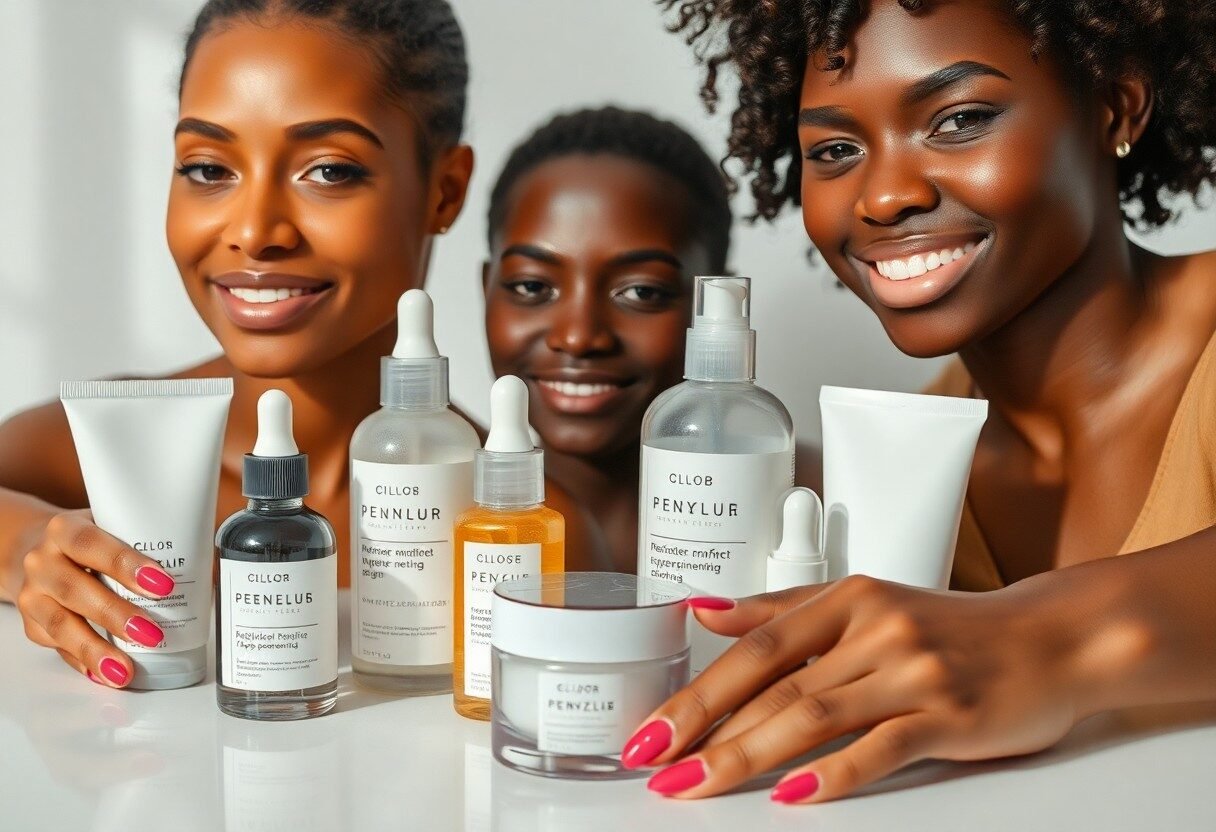
Hyperpigmentation can be a challenging skin issue that many of us face, but I can guide you through effectively addressing it with targeted skincare products. You’ll want to focus on ingredients like vitamin C, retinoids, and chemical exfoliants, which can work wonders in fading dark spots and evening out your skin tone. In this post, I’ll share my expert insights and recommend products that can help you achieve a brighter, more uniform complexion, enhancing your overall skin health.
Key Takeaways:
- Identify the type of hyperpigmentation, such as sun spots, melasma, or post-inflammatory hyperpigmentation, to tailor your skincare approach.
- Incorporate ingredients like vitamin C, niacinamide, and alpha arbutin that are known for their brightening and skin tone-evening properties.
- Utilize exfoliating products, such as AHAs and BHAs, to promote cell turnover and fade dark spots over time.
- Always apply sunscreen daily, as UV exposure can exacerbate hyperpigmentation and undo skincare efforts.
- Consider using retinoids to accelerate skin renewal and improve the overall appearance of hyperpigmentation.
- Be consistent with your regimen, as visible improvements can take weeks to months; patience is key.
- Consult with a dermatologist for personalized advice and potential treatment options, such as chemical peels or laser therapy, particularly for severe cases.
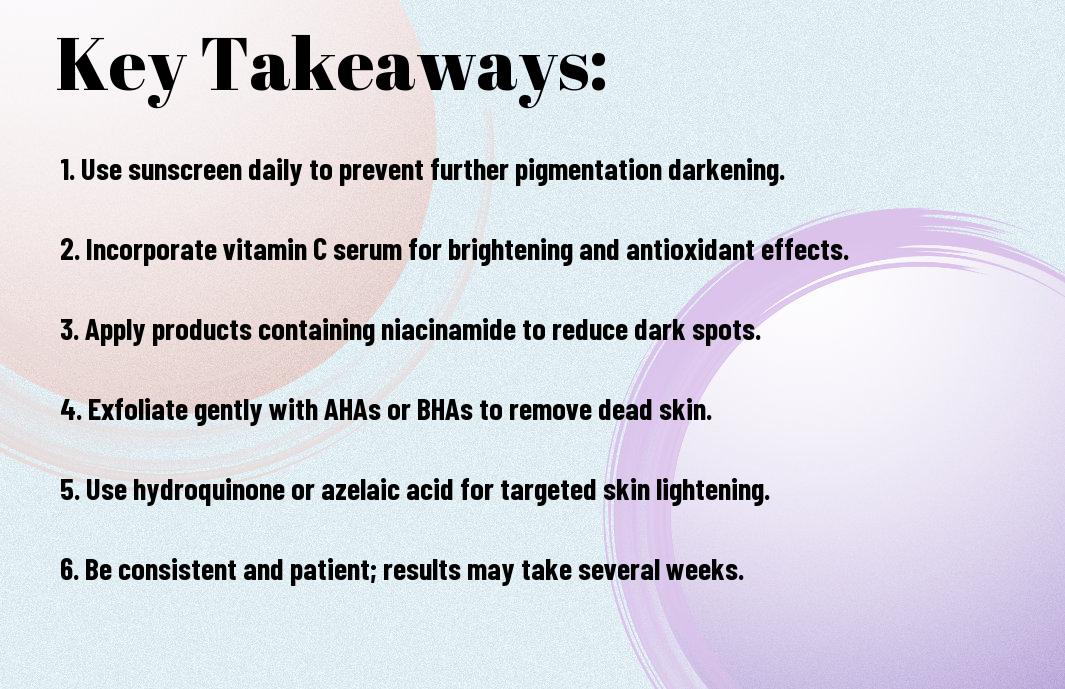
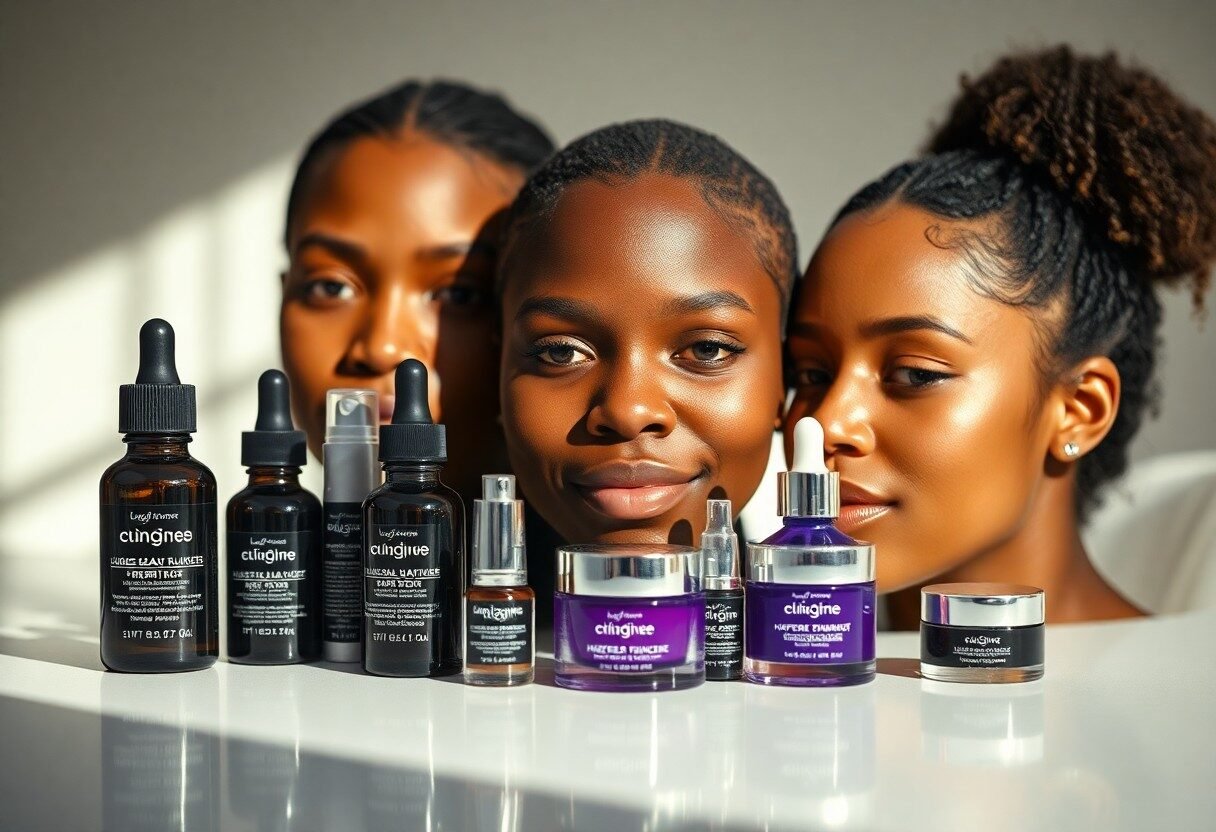
Demystifying Hyperpigmentation: Causes and Triggers
The Role of UV Exposure
Ultraviolet (UV) rays from the sun are one of the leading contributors to hyperpigmentation. They stimulate melanin production in your skin, resulting in dark spots and uneven skin tone. Repeated UV exposure can lead to more pronounced hyperpigmentation, especially in individuals with lighter skin who are less protected. Using broad-spectrum sunscreen daily is necessary to prevent and manage these skin changes.
Hormonal Influences and Skin Changes
Fluctuations in hormones, particularly estrogen and progesterone, can lead to conditions like melasma, which causes patchy dark spots, often on the face. This type of hyperpigmentation is commonly triggered by pregnancy, hormonal therapies, or hormonal imbalances. The interplay between hormones and skin pigmentation is complex, as increased hormonal activity can boost melanin production, making it vital to consider hormonal factors when developing a skincare approach.
Hormonal influences on the skin can be quite pronounced, particularly in women. For instance, during pregnancy, many experience the “mask of pregnancy,” which is a form of melasma. Additionally, conditions such as polycystic ovary syndrome (PCOS) can also contribute to hyperpigmentation. It’s apparent that hormonal changes not only affect our well-being but also visibly alter our skin. Strategies that target the hormonal aspect, alongside topical treatments, can help in managing hyperpigmentation effectively.

Ingredient Intelligence: Active Compounds That Combat Hyperpigmentation
Unpacking Vitamin C: The Brightening Powerhouse
Vitamin C stands out as a formidable ally in the fight against hyperpigmentation. This powerful antioxidant works by inhibiting melanin production, leading to a brighter and more even skin tone. Additionally, it protects your skin from environmental stressors and promotes collagen synthesis, which enhances overall skin health. Regular use of Vitamin C serums can transform your complexion, making it a go-to ingredient for anyone looking to tackle dark spots.
The Efficacy of Retinoids: Speeding Up Cellular Renewal
Retinoids, derivatives of Vitamin A, accelerate cell turnover and fade hyperpigmented areas effectively. By exfoliating the skin on a deeper level, retinoids allow for fresher, more evenly toned skin to emerge. Sharing a common goal, both prescription and over-the-counter retinoids assist in minimizing pigmentation while smoothing fine lines, making them a dynamic option in your skincare arsenal.
The efficacy of retinoids goes beyond mere surface exfoliation; they promote both collagen production and skin regeneration. You may notice that with consistent use, pigmentation marks begin to lighten and your skin texture improves remarkably. While some may experience initial dryness or irritation, adjusting your skincare routine will allow you to enjoy their anti-aging and brightening benefits with patience and care. The ideal results often emerge after a few weeks, making them worthy of incorporation into your nightly routine.
Niacinamide: The Unsung Hero of Skin Tone Evenness
Niacinamide, or Vitamin B3, delivers transformative effects on skin tone through its ability to reduce the appearance of discoloration. Its anti-inflammatory properties further support skin health, making it suitable for sensitive skin types. By regulating melanin transfer in the skin, you’ll find it an effective option for achieving a more balanced complexion.
This versatile ingredient not only addresses hyperpigmentation but also boosts skin barrier function, keeping your skin hydrated and resilient. In studies, niacinamide has shown promising results in reducing dark spots and overall uneven skin tone. Whether you’re using it in a serum or moisturizer, incorporating niacinamide into your routine could be just what you need for a more radiant visage. It’s especially valuable when combined with other actives, allowing the full synergy of your skincare products to unfold.
The Importance of a Proper Skincare Routine
Cleansing: Setting the Stage for Treatment
Cleansing is the foundation of any effective skincare regimen. When your skin is clean, it absorbs treatments better, making the active ingredients in your serums and moisturizers more effective. I recommend using a gentle, non-comedogenic cleanser that won’t strip your skin of its natural oils. The right cleanser will remove makeup, dirt, and oil, providing a fresh canvas for the products that follow.
Exfoliation Techniques: Removing the Layers of Discoloration
Exfoliation plays a vital role in addressing hyperpigmentation. By sloughing off dead skin cells, you not only reveal a brighter complexion but also enhance the efficacy of your treatment products. I usually advise incorporating both physical exfoliants, like scrubs, and chemical exfoliants, such as AHAs or BHAs, to address different skin needs. A balanced approach helps maintain skin’s texture while supporting its natural turnover process.
Chemical exfoliants like glycolic acid or salicylic acid can penetrate deeper into the skin, promoting cell regeneration and fading dark spots effectively. On the other hand, physical exfoliants provide immediate results by removing surface layers of dead skin. Depending on your skin type, I generally recommend exfoliating once or twice a week to avoid over-irritation, allowing your skin to adjust and reap the benefits without compromising its natural barrier.
Moisturizing: Keeping Skin Hydrated and Receptive
Moisturizing is a step I never skip, as hydrated skin is key to its overall health and longevity. A well-formulated moisturizer creates a barrier to lock in hydration and protects against environmental stressors that can worsen hyperpigmentation. Look for products containing ingredients like hyaluronic acid or glycerin, which attract moisture into the skin. This step ensures your skin remains supple and better prepared to absorb active ingredients from serums or treatments.
In my experience, maintaining adequate moisture levels can enhance the overall effectiveness of your entire skincare routine. When your skin is properly hydrated, it is less prone to irritation, allowing active ingredients to perform their best. Plus, a good moisturizer can also support skin barrier function, helping to prevent further discoloration while promoting an even tone. Incorporating this important step into your regimen makes a noticeable difference in how your skin responds to treatment.
How to Layer Products Effectively
Order of Application: Maximizing Efficacy
To reap the most benefits from your skincare products, the order in which you apply them matters greatly. Begin by cleansing your face, followed by a toner if you use one, then move to lightweight serums, such as those containing Vitamin C or niacinamide. Follow this up with thicker products like creams or oils, finishing with sunscreen during the day. This ensures that lighter formulations can penetrate effectively and that heavier products provide a protective seal on top.
Combining Ingredients: What Works Together?
Specific ingredient combinations can significantly enhance your results. For instance, pairing Vitamin C with ferulic acid not only stabilizes the Vitamin C but also boosts its efficacy in lightening hyperpigmentation. Alternatively, using retinoids combined with hyaluronic acid can improve cellular turnover while maintaining hydration, which is key for sensitive skin types.
Understanding synergy is necessary. The combination of kojic acid and licorice root extract can yield powerful brightening results. On the other hand, certain ingredients may counteract each other’s effects, like using Vitamin C with retinol in the same routine, so time them appropriately. For example, opt to use retinol at night and Vitamin C in the morning for optimal benefits without the risk of irritation.
Natural Remedies: Can Home Ingredients Help?
The Spotlight on Licorice Extract and Turmeric
Licorice extract and turmeric have garnered attention for their potential in reducing hyperpigmentation. Both ingredients possess natural brightening properties; licorice extract contains glabridin, which inhibits melanin production, while turmeric is rich in curcumin, known for its anti-inflammatory and antioxidant benefits. Incorporating these into your skincare routine can enhance your fight against dark spots while promoting an even skin tone.
Essential Oils: Are They Effective or Overrated?
While crucial oils are praised for their natural properties, their effectiveness against hyperpigmentation varies. Tea tree oil, for instance, is known for its antibacterial properties, but using it solely for hyperpigmentation may not yield desired results. In contrast, carrot seed oil has gained popularity for its skin-rejuvenating abilities. Despite anecdotal evidence supporting their use, scientific backing is limited; therefore, caution is required when relying on these extracts for hyperpigmentation treatment.
Exploring crucial oils can be an exciting venture, though the evidence varies. You might find that oils such as lavender and frankincense provide soothing benefits to the skin but do not specifically target hyperpigmentation. Additionally, crucial oils can cause sensitivity in some individuals, particularly when used undiluted or in excessive amounts. It’s wise to patch test and consult a professional before integrating them into your routine, ensuring you achieve luminous skin without unwanted side effects.
Red Flags: What Not to Use on Your Skin
Harsh Chemicals: The Dangers of Abrasiveness
Avoiding skincare products laden with harsh chemicals is necessary, as they can lead to further irritation and exacerbation of hyperpigmentation. Ingredients like alcohol, sulfates, and synthetic fragrances might deliver immediate results but can strip your skin of its natural barriers. This increased sensitivity often results in a damaging cycle of inflammation and darkening of the skin, making your hyperpigmentation even more pronounced.
Misleading Labels: Avoiding Marketing Gimmicks
Be wary of skincare products that boast terms like “brightening” or “whitening” on their labels. These claims can often mislead consumers into purchasing products with little to no efficacy against hyperpigmentation. It’s easy to fall for the hype, especially when products promise miraculous results, but the reality lies hidden within the ingredient list.
Many marketing gimmicks exploit consumers’ desires for fast results. For example, terms such as “age-defying” or “miracle cure” can be attractive, but they often mask a lack of substantive research backing these claims. Focusing on products with proven ingredients like vitamin C, niacinamide, or retinoids can help steer you away from misleading options. Prioritize companies that invest in transparency by detailing their formulation processes and clinical studies, ensuring you are making informed choices for your skin health.
Results Timeline: What to Expect When Targeting Hyperpigmentation
Realistic Expectations: Understanding Improvement Rates
In my experience, achieving noticeable results in hyperpigmentation can take time. Generally, you might start to see some improvements in 4 to 6 weeks, but maximum effects can take anywhere from 3 to 6 months. Factors such as the severity of pigmentation, product strength, and skin type influence how quickly you’ll see results. Patience is key, as healthier skin often requires consistent care over an extended period.
The Importance of Consistency in Your Regimen
Establishing a consistent skincare routine greatly impacts the success of your treatment for hyperpigmentation. Regular application of targeted treatments such as vitamin C, retinoids, or alpha hydroxy acids (AHAs) enhances their efficacy. Without adherence to your routine, even the best products may yield subpar results. Skipping applications can lead to patches darkening once again as the skin’s melanin production resumes. Staying committed transforms your skin gradually and effectively.
In my own journey with hyperpigmentation, I found that a consistent routine not only amplified the positive effects of my chosen products but also helped me to track progress more accurately. Setting reminders or creating a checklist ensured that I invested daily time into my skincare. Over the weeks, I documented my skin’s transformations, celebrating small victories, which motivated me to maintain my regimen. Cultivating this habit is often one of the most rewarding aspects of tackling hyperpigmentation; it reinforces your commitment to achieving a radiant complexion.
Expert Tips for Maintaining Long-Term Skin Health
Achieving lasting skin health goes beyond merely using the right products; it involves a holistic approach that integrates various aspects of your lifestyle. Here are some expert tips you should consider:
- Sun protection is a daily must.
- Hydration keeps your skin plump and radiant.
- Consistent skincare routine ensures better results.
- Healthy diet provides vital nutrients for skin.
- Avoiding smoking can prevent premature aging.
Knowing these fundamentals sets the groundwork for achieving and maintaining a glow that lasts.
Sun Protection: The Non-Negotiable Step
The importance of sun protection can’t be overstated. Daily application of broad-spectrum sunscreen with a minimum SPF of 30 not only prevents hyperpigmentation but also protects against skin cancer. I recommend reapplying every two hours, particularly if you’re outdoors or swimming. Make this a non-negotiable step in your skincare routine to ensure your skin remains healthy and youthful.
Lifestyle Factors: Diet and Hydration’s Role in Skin Clarity
Your diet and hydration levels play a vital role in achieving clear skin. Incorporating fresh fruits, vegetables, whole grains, and healthy fats into your meals yields significant benefits. Staying hydrated helps flush toxins and promotes elasticity, thereby enhancing your overall complexion. I can’t emphasize enough how impactful a balanced diet coupled with adequate water intake can be for your skin.
- Fresh fruits and vegetables support skin health.
- Whole grains provide vital nutrients.
- Healthy fats contribute to a glowing complexion.
- Adequate hydration is key for skin elasticity.
Recognizing how interconnected diet and hydration are with your skin’s appearance can empower you to make better choices for long-term skin health.
For further insights, consider the role of specific nutrients such as vitamin C and omega-3 fatty acids. Vitamin C aids in collagen production and reduces pigmentation, while omega-3s help to maintain skin barrier function. By incorporating both into your diet, you actively support skin rejuvenation and clarity.
- Vitamin C enhances collagen production.
- Omega-3 fatty acids maintain skin barrier function.
- Antioxidants fight free radical damage.
Recognizing the powerful influence of nutrition on your skin can be transformative, leading to healthier, more vibrant skin in the long run.
Summing up
To wrap up, addressing hyperpigmentation with skincare products involves a thoughtful combination of ingredients like vitamin C, retinoids, and sunscreens. I encourage you to start with a consistent routine, using products tailored to your skin type and concerns. By being patient and diligent, you can reduce the appearance of dark spots and promote an even skin tone. Always patch-test new products and consult a professional if you’re unsure about the best approach for your skin. Your journey to clearer skin starts with informed choices.
FAQ: How to Address Hyperpigmentation with Skincare Products
Q: What is hyperpigmentation and what causes it?
A: Hyperpigmentation is a condition where certain areas of the skin become darker than the surrounding skin due to excess melanin production. Common causes include sun exposure, hormonal changes (such as pregnancy or birth control), skin injuries (like acne scars), and certain medications. Understanding the root causes can help in selecting the appropriate skincare products for treatment.
Q: Which ingredients should I look for in products to treat hyperpigmentation?
A: Effective ingredients for treating hyperpigmentation include hydroquinone, retinoids, vitamin C, kojic acid, niacinamide, and alpha arbutin. These ingredients work to inhibit melanin production, accelerate skin cell turnover, and even out skin tone, making them crucial for any anti-hyperpigmentation routine.
Q: How long does it typically take to see results from skincare products for hyperpigmentation?
A: The time to see noticeable results can vary greatly depending on the severity of the hyperpigmentation, the product used, and individual skin type. Generally, users can expect to see improvement in 4 to 12 weeks of consistent use. Regular application and patience are key components of successful treatment.
Q: Can I use multiple products to address hyperpigmentation at the same time?
A: Yes, layering products can be effective, but it’s crucial to introduce them gradually to avoid irritation. Start with a main treatment like a serum or cream containing a powerful active ingredient, and then you can incorporate complementary products, such as brightening masks or exfoliants that don’t irritate the skin, for enhanced results.
Q: Is sunscreen important when treating hyperpigmentation?
A: Absolutely. Sunscreen is vital when dealing with hyperpigmentation. Many treatments can make the skin more sensitive to sunlight, which can exacerbate dark spots. Using a broad-spectrum sunscreen with at least SPF 30 daily helps prevent further pigmentation and protects the results of your skincare routine.
Q: Are there any lifestyle changes that can help improve hyperpigmentation?
A: Yes, certain lifestyle changes can complement your skincare routine. These include avoiding excessive sun exposure, wearing protective clothing, maintaining a balanced diet rich in antioxidants, managing stress, and staying hydrated. These factors can support overall skin health and enhance the effectiveness of topical treatments.
Q: When should I consider seeing a dermatologist for hyperpigmentation treatment?
A: If over-the-counter products are not providing the desired results after a consistent period or if you experience severe irritation, it may be time to consult a dermatologist. They can offer prescription treatments, advanced therapies like chemical peels or laser treatments, and personalized advice based on your skin type and specific condition.



